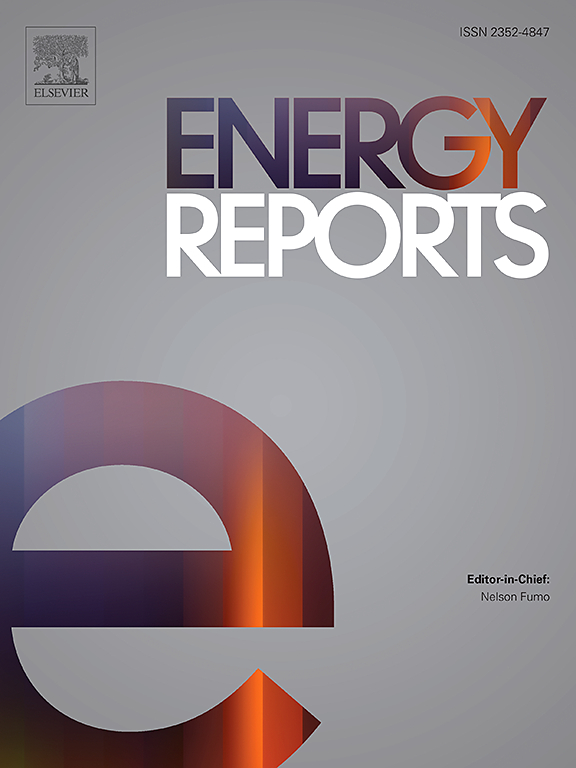评价个性化环境控制系统,以提高韩国在冷却季节的局部热舒适
IF 5.1
3区 工程技术
Q2 ENERGY & FUELS
引用次数: 0
摘要
商业建筑中的供暖、通风和空调(HVAC)系统往往无法捕捉和响应居住者不同的热需求。先前的研究已经证实,使用个人环境控制系统(PECS)系统为暖通空调系统提供了替代方案,而无需对现有建筑进行昂贵的投资。在办公空间中使用PECS可以满足使用者的个人制冷需求,并有可能改善不同使用者的热舒适性。然而,对于PECS在不同HVAC系统运行条件(即制冷温度)下应用的有效性以及建筑中PECS用户群体特征的识别,目前还缺乏研究。因此,本研究考察了在不同室内设定值温度下冷却PECS装置对居住者热响应的影响,并比较了不同PECS装置的有效性。为此,我们选择了四个冷却PECS装置来冷却特定的身体部位(即颈部、身体核心、上半身、大腿)。在一所大学的私人办公室中,使用不同的热指标对14名参与者进行了冷却PECS设备的评估,其中大学设定温度为24°C,国家节能建议设定温度为28°C。研究结果表明,夏季在办公空间中使用冷却PECS可以缓解局部热不适,降低室内垂直和水平温度的不对称性。在各种PECS设备中,基于多个热舒适指标,桌面风扇被确定为最有效的设备。本研究结果为暖通空调系统冷却PECS的应用提供了参考,并在解决商业建筑的热分配问题方面具有巨大的潜力。本文章由计算机程序翻译,如有差异,请以英文原文为准。
Evaluation of personalized environmental control systems to improve local thermal comfort during cooling season in Korea
Heating, Ventilating and Air Conditioning (HVAC) systems in commercial buildings have often failed to capture and respond to the varying thermal requirements of occupants. Previous studies have verified that the use of Personal Environmental Control System (PECS) systems offer alternative options for HVAC systems without an expensive investment in existing buildings. The PECS in office spaces can respond to the individual cooling needs of occupants and have potential to improve different occupants’ thermal comfort. However, there is still a lack of research on the effectiveness of the PECS application under different HVAC system operating conditions (i.e., cooling temperatures) and the identification of the characteristics on PECS user groups in buildings. Therefore, this study investigated the effect of cooling PECS devices on the thermal responses of the occupants at different indoor setpoint temperatures and compared the effectiveness of the different PECS devices. For this, four cooling PECS devices were selected for cooling specific body parts (i.e., neck, body core, upper body, thigh). The cooling PECS devices were assessed using different thermal metrics for 14 participants in a private office in a university with 24°C of the university setpoint temperature and 28°C of the recommended setpoint temperature for national energy conservation. The results showed that using cooling PECS in an office space during summer could mitigate local thermal discomfort and lower the vertical and horizontal indoor temperature asymmetry. Among the various PECS devices, the desk fan was identified as the most effective device based on multiple thermal comfort metrics. The findings of this study provide a reference for cooling PECS applications with HVAC systems and have immense potential for solving thermal distribution problems in commercial buildings.
求助全文
通过发布文献求助,成功后即可免费获取论文全文。
去求助
来源期刊

Energy Reports
Energy-General Energy
CiteScore
8.20
自引率
13.50%
发文量
2608
审稿时长
38 days
期刊介绍:
Energy Reports is a new online multidisciplinary open access journal which focuses on publishing new research in the area of Energy with a rapid review and publication time. Energy Reports will be open to direct submissions and also to submissions from other Elsevier Energy journals, whose Editors have determined that Energy Reports would be a better fit.
 求助内容:
求助内容: 应助结果提醒方式:
应助结果提醒方式:


